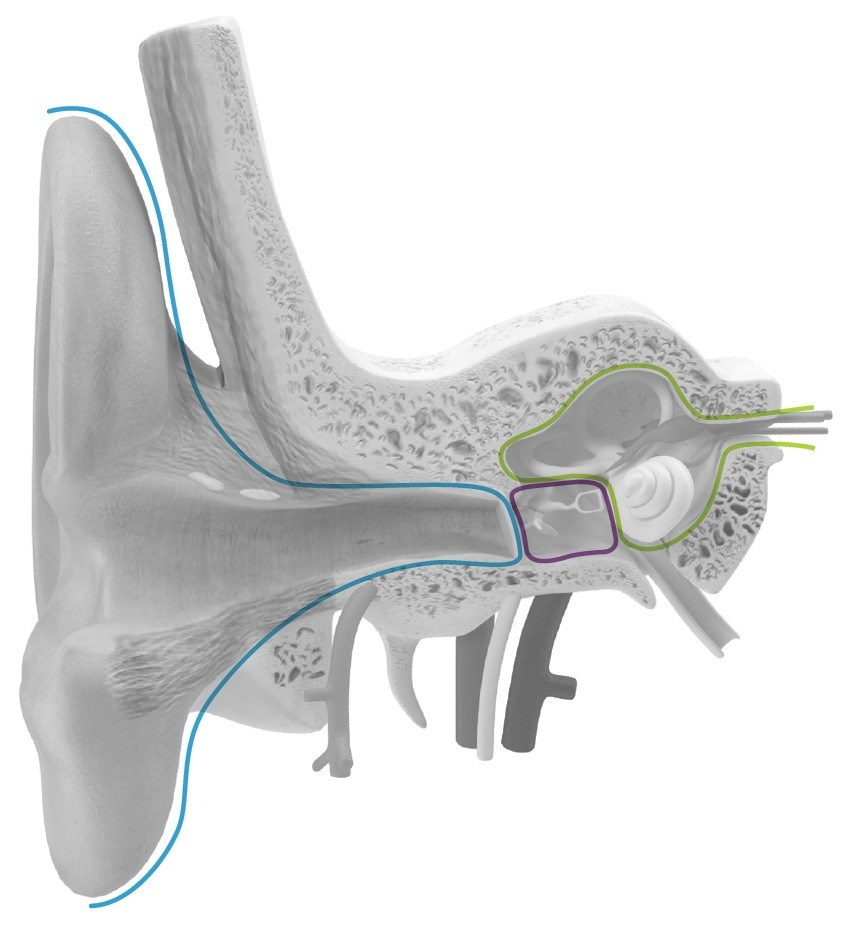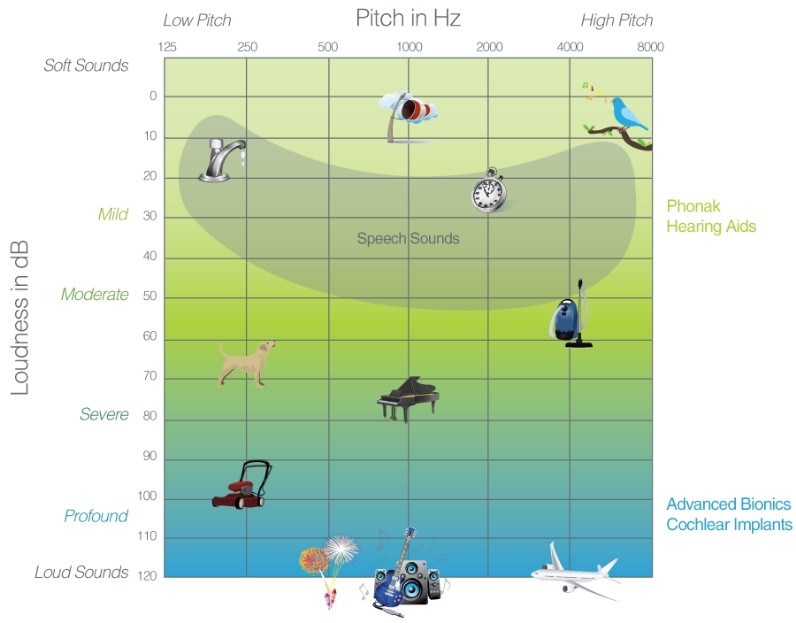
Understanding Hearing Loss
The ability to hear is something that can be easily taken for granted. But hearing is a complex process that relies on several areas of the ear and the brain to work together in harmony.
The ear is responsible for collecting sounds and transmitting them to the brain for interpretation. This process involves three separate areas of the ear: the outer, middle, and inner ear.
Hearing loss occurs when there is abnormality or damage to any of these parts. For most individuals, the problem occurs in the inner ear (or cochlea) where sound is transferred to the hearing nerve. An audiologist can help identify the problem and will begin by conducting a hearing test.
How is the ear structured?
The ear consists of three sections: the outer, middle, and inner ear. Each plays an important role in hearing.

OUTER EAR acts as a funnel to collect sound vibrations and conduct them through to the eardrum.
MIDDLE EAR amplifies the sound vibrations and conducts them to the inner ear.
INNER EAR contains the cochlea which converts sound vibrations into neural impulses that travel up the auditory nerve.
The degrees of hearing loss.
An audiogram is a graphical representation of your hearing ability.
Where the results of your hearing test fall on the audiogram will help your hearing care professionals determine the best options for you.

Did you know?
Aging and excessive noise exposure are the two leading causes of hearing loss.1
LET'S TALK
NEXT SECTION
REFERENCES
Hearing Loss Association of America, “Causes of Sensorineural Hearing Loss”. https://www.hearingloss.org/hearing-help/hearing-loss-basics/types-causes-andtreatment

